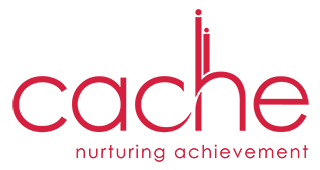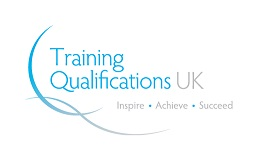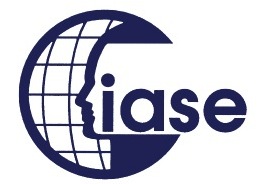Down Syndrome And Learning Efficiently Is No More A Myth
17th August 2022

The educational requirements for children with down syndrome have increased over the years as gone are the days when down syndrome and learning were considered a myth. Early diagnosis and detection of this particular unique trait of children owing to advanced medical facilities have made the job easier. Teaching students with down syndrome was only a limited chapter earlier as comprehending the mindset and thought process of a kid with this particular characteristic was indeed a hard nut to crack.
The department of education at both national and global levels has encouraged the idea of the inclusive classroom where specially-abled kids are getting a perfect learning environment along with other kids. The bachelor of education in special education needs program has always raised its voice in favor of this awesome concept.
Now that we know that kids with down syndrome are getting proper and regular education, we must also learn the basic characteristics of these special kids. According to doctors, there are certain special features of a child with down syndrome that a special education teacher must be aware of.
The 5 prime characteristics that are being noticed in a child with down syndrome are:
Generalized anxiety is a common issue where kids often burst out in overwhelming emotions while responding to certain situations. Shortness of breathing, heart pounding, nail-biting, rubbing or wringing hands, etc., are some sure-shot traits that ensure a child with down syndrome is suffering from generalized anxiety.
It usually takes a lot more time for these special kids to get along with any environment or people. They are extremely conscious and have acceptance issues where social anxiety plays an integral role. They require some therapeutic treatment to get over these challenges as all of them denote the presence of ADHD (attention deficit hyperactivity disorder). To prevent any further health problems required medication is provided to children with down syndrome.
Depression is a common add-on to down syndrome and this is prevalent in both adults and children. Social withdrawal, frequent mood swings, drastic loss or gain of weight, having a negative tone in any conversation, unusual sleep pattern, insomnia, etc.
Since generalized anxiety is a common phenomenon in down syndrome children, OCD or obsessive-compulsive disorder is a ritualistic behavior that often comes in handy. An increased level of restlessness and worry may lead the child with Down syndrome to behave in a rigid manner.
Special children often encounter several challenges in their lives that include bullying from other kids, parent issues, etc. It has been observed multiple times that many parents have gone for divorce because of their specially-abled child leaving the kid behind mercilessly. This type of incident acts as an environmental trigger and kids suffering from such PTSD behave hyperactively quite often.
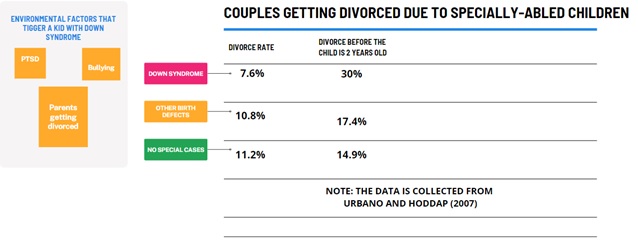
Another interesting fact that is quite unique regarding down syndrome is mosaic down syndrome behavior.
Mosaic down syndrome:
Generally, a baby is born with 46 chromosomes but babies with Down syndrome have an extra copy of one of these chromosomes, chromosome 21. A medical term for having an extra copy of a chromosome is ‘trisomy.’ This extra copy changes how the baby’s body and brain develop, and because of this, the baby faces various physical and mental challenges while growing up.
The term mosaic means mixture and combination and this particular type of down syndrome is only found in 2% of people. For kids having Mosaic Down syndrome, some of their cells have 3 copies of chromosome 21, but other cells have the typical two copies of chromosome 21. They may not have all the features of the other two types of down syndrome Trisomy and Translocation down syndrome. However, they may have fewer features of the condition due to the presence of some (or many) cells with a typical number of chromosomes.
One of the most prominent signs of Mosaic down syndrome is that the individual is having slow speech and white spots on the iris of the eye. However, special education teachers never discriminate and pay an equal amount of importance to every kid present in an inclusive classroom.
Certain strategies that special educators use while teaching in an inclusive classroom where kids with down syndrome and other special abilities are present:
- Use both written and verbal communication and try to avoid words like “My student with Down syndrome”. Instead, you can use “my Downs kid” or “he’s Downs”. A special education teacher must install a notion to all other students to think of students with Down syndrome as people first.
- Never use words that cause barriers between classmates at any cost. Avoid terms with pessimistic tones like “retarded” or “handicapped;” use “developmentally delayed” instead. If you’re wondering how you should address a kid with down syndrome, feel free to reach out to parents.
- Being a special educator you must use emotionally neutral expressions while referring to your students. You should not utter sentences like “My student has Down syndrome” or “My student suffers from Down syndrome.” These sentences make kids feel that they're inferior to others. Do not preach any stereotypical concepts regarding them “They’re so loving/happy all the time.” Children with Down syndrome experience a vast spectrum of emotions and are not all alike.
- Using terms like “mild” or “severe” in the case of addressing a child with down syndrome is not at all appreciated because one is either a child with Down syndrome or not. There might be various types and degrees of this special case but strike out the concept of mild or severe right now.
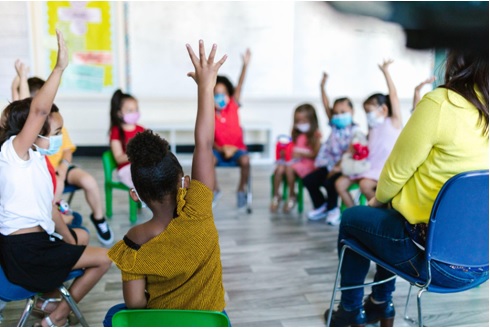
How to accommodate students with down syndrome?
- While speaking with the student, special education teachers must use clear, receptive language and short sentences. An audio-visual format or learning will help more than theoretical learning when teaching students with Down syndrome.
- You can definitely include additional images in handouts when you can. Decorate the classroom using colorful charts, stickers, vibrant notice boards, etc.
- Play videos with closed captions so that the content seems easier to them as they need more time to imbibe the lesson than ordinary students owing to their special characteristics. Break up blocks of texts with lists and tables and use bolding and underlining to highlight important points.
- When dealing with advanced vocabulary, you can make it easier for them by drawing small images against difficult words in the margins.
- Many non-special students may find this monotonous and boring, but specially-abled children greatly benefit from overlearning material. Therefore, repeat your words constantly and use flashcards or pictures to make them less mundane. Give them extra time and help them to get along with the words thoroughly.
- When students with Down syndrome know 50-70% of the words on a page, it frees them up to focus on the more challenging terms they come across. Students with Down syndrome generally have good social skills. So encourage them to organize tasks with other students who can act as appropriate role models.
- Group activities where students collaborate to fill out charts and information organizers are also helpful. Set small milestones and celebrate in a minimalistic way when those special kids reach each target.
- Special educators must design special assignments that cater to their strengths, mental capacities, and thought processes so that they can create opportunities for their success. Have faith in your student’s abilities and kids with down syndrome generally put more than their 100% effort to reach the goal.
Therefore, if you’re an aspirant special educator aiming at teaching students with down syndrome reach out to the bachelor of education in special education needs program at 1800-212-6400. The experts will guide you regarding every procedure and certification you require to be a global standard special education teacher and if you’re already a special educator you’ll learn more about your career advancement globally.





